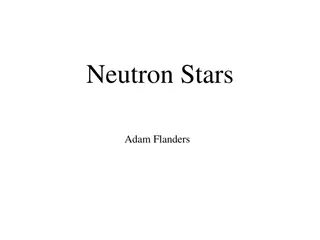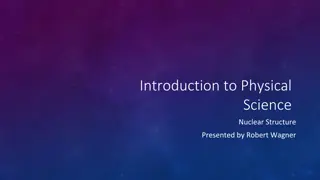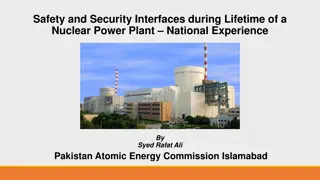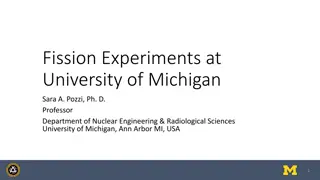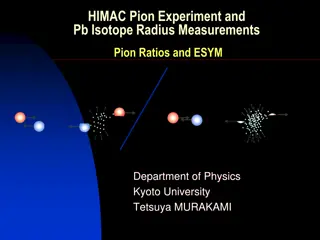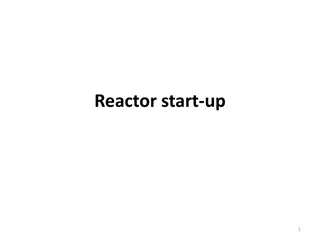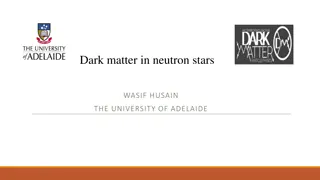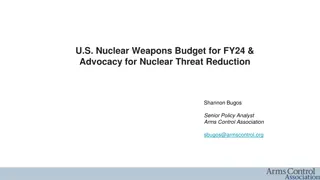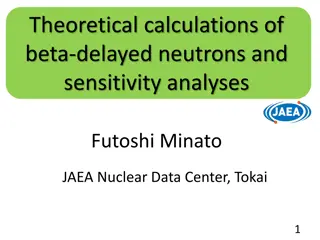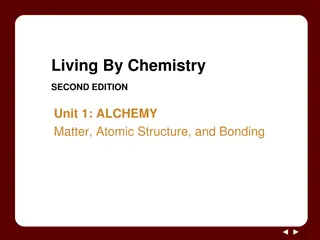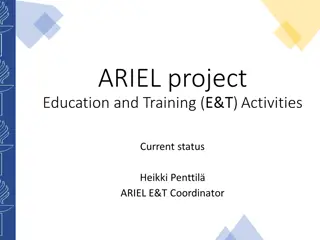Nuclear Data for Neutron Sources and Diagnostics
The importance of improved nuclear data for designing and building new neutron sources, studying damage, and enhancing diagnostics. Explore breakthroughs in breakup reactions and recent activities in the field.
Download Presentation

Please find below an Image/Link to download the presentation.
The content on the website is provided AS IS for your information and personal use only. It may not be sold, licensed, or shared on other websites without obtaining consent from the author.If you encounter any issues during the download, it is possible that the publisher has removed the file from their server.
You are allowed to download the files provided on this website for personal or commercial use, subject to the condition that they are used lawfully. All files are the property of their respective owners.
The content on the website is provided AS IS for your information and personal use only. It may not be sold, licensed, or shared on other websites without obtaining consent from the author.
E N D
Presentation Transcript
Nuclear data for neutron sources and diagnostics and electronics Michael J Loughlin Contributions from Universidad Nacional de Educaci n a Distancia (UNED), Escuela T cnica Superior de Ingenieros Industriales, Departamento de Ingenier a Energ tica, Madrid, Spain ORNL is managed by UT-Battelle LLC for the US Department of Energy
Neutron Sources For the study of damage and gas production FPNS or IFMIF-DONES, Advanced Fusion Neutron Source (A- FNS, Japan) (D-Li stripping) Reactor (e.g., HFIR) Spallation Neutron Source Component test facility Operating tokamaks What improved nuclear data is required to design and build a new neutron source? 2 2
Breakup reactions Breakup reactions cause the emission of a projectile fragment with an angular distribution strongly focused toward forward. Kalbach-Mann systematics [1] is not able to reproduce this peaked neutron emission. Sauvan et al. [2] proposed a methodology to implement a new kinematics [3] in ENDF format and transport code. The methodology requires Independent consideration of breakup and other neutron- emitting reactions. Angular emission of neutrons dependent on the reaction. Talys code can provide these data. In order to use this new emitting law ENDF format documentation related with new kinematics needs to be updated The NJOY code needs to be modified to allow this new formatted file being converted to ACE. The MCNP6 transport code needs to be modified to read the new ACE files and reproduce the breakup angular distribution. Much better fitting for neutron from 33-MeV deuterons [1] C. Kalbach, Systematics of continuum angular distributions: Extensions to higher energies Phys. Rev. C 37, 2350 (1987) [2] P. Sauvan et al. Implementation of a new energy-angular distribution of particles emitted by deuteron induced nuclear reaction in transport simulations , EPJ Web of Conferences, 146, 02010 (2017) [3] C. Kalbach, Phenomenological model for light-projectile breakup Phys. Rev. C 95, 014606 (2017) 3 3
Recent activities for DONES Nuclear data Scarce experimental data concerning the neutron emission from 40 MeV deuteron irradiation. JENDL-5 seems to be the most accurate deuteron library, but Disparity of the results reveals the existence of large uncertainties [4]. Limited available nuclides. Very large data files, since the angular distribution is tabulated. These uncertainties will also have a direct impact on the residual doses. Dose outside accelerator vault from neutrons emitted in the Beam Dump Deuteron data library Maximum outside dose JENDL-5 57 Sv/h TENDL-2021 with breakup 16 Sv/h [4] V. Lopez et al. Sensitivity to nuclear data of the design of the IFMIF-DONES beam dump Front. Phys. 11, 1144057 (2023) 4 4
DONES: activation of beam tube Stainless Steel as a beam facing material results in large activation and residual doses during maintenance. 56Fe (d,2n) 56Co is the mainly responsible. Experimental data up to 20MeV and discrepant data in libraries from that energy. The replacement of steel with aluminum alloy very much reduces residual doses after several days of cooling time [5] One of the key missing nuclear data for DONES were the Nb cross sections for deuteron interactions. Niobium is present in accelerating cavities and is thus a beam- facing material. [5] F. Ogando, et al. Beam-facing material selection for mitigation of residual doses in the HEBT of IFMIF-DONES , Journal Nucl Mat and Energy (2024) 5 5
Diagnostics A wider range of materials are used then those encountered in first wall materials and shielding. Nuclear heating, transmutation, gas production. B C N O Al Si P S K Ca Ti Cr Mn Fe Co Ni Cu Zr Nb Mo Rh W Pt Au Nitride Ceramic Boron Nitride Ceramic Aluminum Gold Inconel 718 Nitronic-60 Monel 400 Molybdenum Pascalloy Platinum Rhodium TZM Alloy (Ti- Mo-Zr) Tungsten 6 6
Neutron Diagnostics The primary diagnostic for fusion power measurement will be neutron activation. Nuclear data needs: Radiation transport Neutron sources Dosimetry Standards Uncertainty quantification Use in breeder blankets Threshold (MeV) 10.0 10.0 10.0 10.1 10.1 10.4 10.8 10.9 10.9 11.5 11.7 11.9 12.0 12.4 12.5 12.5 Reaction Half-life E (MeV) 11B(n,p)11Be 14N(n,2n)13N 16O(n,p)16N 51V(n, )48Sc 65Cu(n,2n)64Cu 55Mn(n,2n)54Mn 59Co(n,2n)58Co 19F(n,2n)18F 63Cu(n,2n)62Cu 89Y(n,2n)88Y 48Ti(n,d)47Sc 45Sc(n,2n)44Sc 90Zr(n,2n)89Zr 52Cr(n,2n)51Cr 47Ti(n,d)46Sc 58Ni(n,2n)57Ni 13.80 9.96 7.13 43.67 12.70 312.5 70.8 109.7 9.74 107 3.35 2.44 78.4 27.2 83.8 36.1 s min s hr hr d d m m d d d h d d h 2.140 0.511 6.130 1.3145 0.511 0.835 0.811 0.511 0.511, 1.173 1.836 0.159 0.271, 1.159 0.909 0.320 0.889 0.026 64Zn(n,2n)63Zn 23Na(n,2n)22Na 90Zr(n,2n)89Zr 35Cl(n,2n)34Cl 46Ti(n,2n)45Ti 39K(n,2n)38K 50Cr(n,2n)49Cr 176Lu(n,3n)174Lu 54Fe(n,2n)53Fe 203Tl(n,3n)201Tl 169Tm(n,3n)167Tm 191Ir(n,3n)189Ir 197Au(n,3n)195Au 107Ag(n,3n)105Ag 12C(n,2n)11C 59Co(n,3n)57Co 38.1 2.6 4.18 32 3.08 7.71 41.9 3.3 8.53 3.05 9.25 13.1 183 41.3 20.3 271.6 m y m m m m m y m d d d d d m d 0.669 1.275 0.588 0.511 0.511 0.511 0.153 1.342 0.153 0.167 0.208 0.245 0.099 0.443 0511 0.122 12.5 13.0 13.0 13.1 13.2 13.5 13.5 13.5 13.9 14.0 14.9 16.0 16.0 17.5 18.8 19.1 7 7
Electronics Single event effects caused by neutrons can disable electronics. This is important for control and safety equipment. Thermal neutrons (reactions in doping materials) and neutrons above 6MeV ((n,p)and (n, ), recoilingsiliconnuclei)are the most important. Important during operations and maintenance (remote handling) The shielding problem: ITER_D_3FM52L - Radiation environment for equipment during operations by R Juarez 8 8
Summary Accelerator based neutron sources require improved nuclear data at energies for charged particle reactions at energies >/= 55MeV. Diagnostics require nuclear data for a wide variety of materials shielding nuclear heating, gas production and transmutation. Neutron diagnostics need dosimetry standards. Improved radiation transport modelling for shielding design and qualification of electronics (if opted for). 9 9
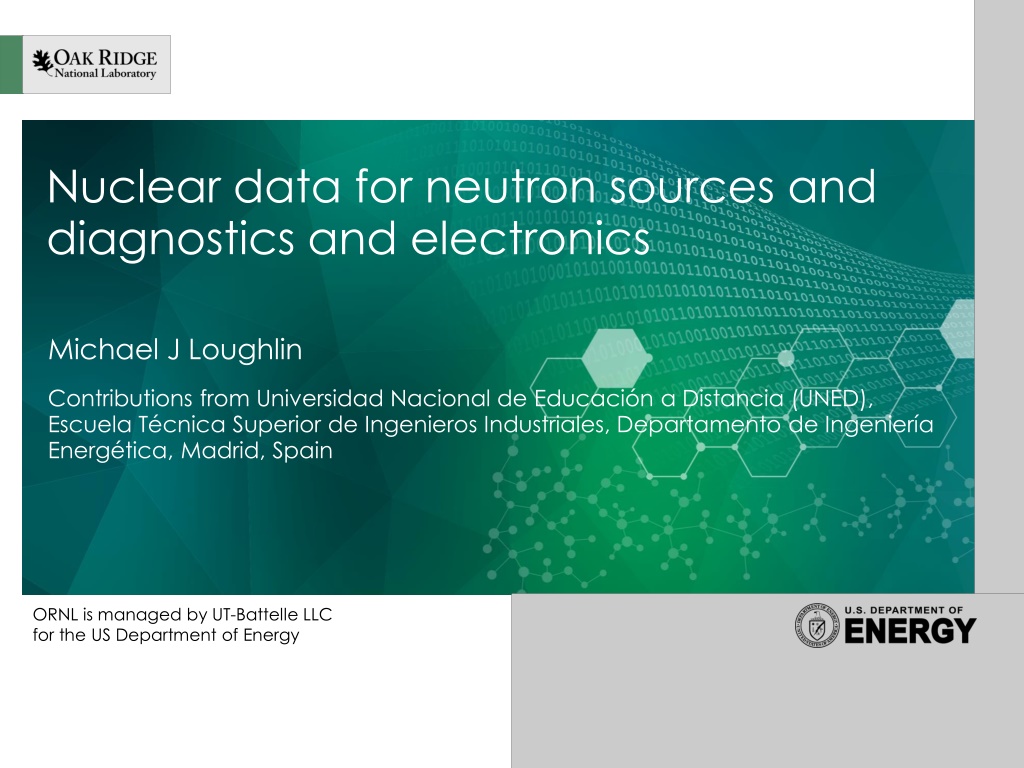
 undefined
undefined











